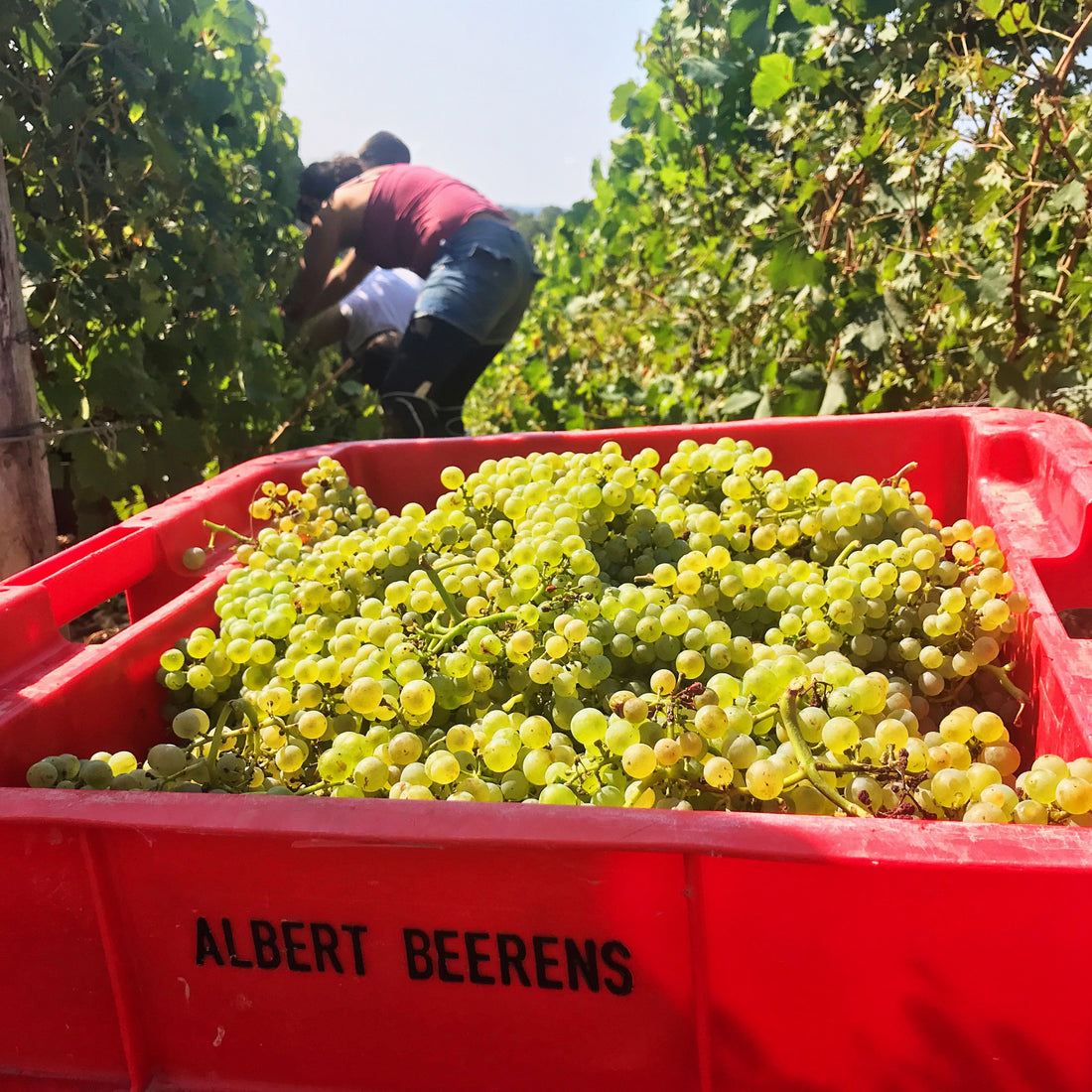
What grapes make the flavour of your Champagne?
One of the key factors effecting the style of a Champagne is the grapes which are used and in what quantities per bottle. The location these grapes come from can make a difference to the flavour and smell of a cuvée too. Some cuvées may taste slightly different from one village to another and that is mainly due to the soil and climate. But what are these grapes and how do they taste?
In Champagne, there are actually 7 different types of grapes that can be planted and harvested in the region. However, there are 3 main varieties which account to 99.7% of all vineyards. These are Chardonnay, Pinot Noir and Pinot Meunier. To some people’s surprise two of these grapes (Pinot Noir and Meunier) are actually red grapes! There are 34,000 hectares of vineyards (84,000 acres) in Champagne and the breakdown of each grape is below. Creating a white wine from red grapes can be done by pressing the grapes very gently so the white juices seep from the skin. The best juice is generally that which flows first from the pressing. This means grower champagnes can select the best juices to go in to their own wines first, before selling to the cooperatives and houses. A nice bonus to owning all your grapes!
Creating a white wine from red grapes can be done by pressing the grapes very gently so the white juices seep from the skin. The best juice is generally that which flows first from the pressing. This means grower champagnes can select the best juices to go in to their own wines first, before selling to the cooperatives and houses. A nice bonus to owning all your grapes!
There are strict limits to how much juice you can make from a certain weight of grapes. The slower the press, generally, the better the wine and the longer it takes to make. The cheaper champagnes are usually pressed quicker and harder and this method can make the taste quite harsh and sharp.

The 3 main grape varieties all have certain places in the region which they thrive in. This is down to the make up of the grape and the conditions it needs to ripen and develop into a pleasant tasting fruit. We’ll talk more about regions in our future articles.
Chardonnay
The Chardonnay grape is a popular grape around the world and is the most common white grape used to make white wine. In Champagne, the Côte des Blancs region is the most famous for producing exceptional Chardonnay grapes and 100% Chardonnay cuvées – Blanc de Blancs. There are Chardonnay vineyards across the whole of Champagne but in the Côte des Blancs they have the famous Grand Cru villages of Le Mesnil, Cramant and Avize.
Chardonnay takes longer to develop its fruit compared to Pinot Noir and Meunier and it is this quality that makes the wines built for ageing. The grapes can produce fragrant wines and strong characteristics of citrus, flowers and elegance. Some villages, like Cramant, can create creamy, vanilla and toasty flavours. Whereas, Le Mesnil tends to be more mineral, floral and fresh. These two nearby villages show how terroir can affect a wine and how it tastes; this is why it is so important.

Pinot Meunier
A relative of Pinot Noir, the Meunier grape is considered the most reliable and consistent in Champagne due to its ability to cope with harsher climates. Pinot Meunier is most commonly planted along the Marne valley and the most northern Aisne vineyards, as it is much cooler here and the grapes will still ripen and mature well.
It produces a softer and smoother fruity flavour than the Pinot Noir and is a very supple and flexible grape. Meunier was once considered a wine to support blended Champagnes only, due to its consistency. However, more and more producers are recognising its amazing flavour and youthfulness can create very exciting cuvées. 100% Meunier Champagnes are much rarer and unique and we have certainly found some absolute diamonds in our blind tastings to bring to you.

Pinot Noir
Pinot Noir is the predominant grape in the Montagne de Reims and Côte des Bar regions. The Northern slopes of Montagne de Reims suit the grape perfectly as the higher plots, especially those south and south-west facing, can soak up the climate to give it the full body and complexity. Some of the most famous and well renowned villages that hit these criteria in Montagne de Reims are Mailly and Verzenay, then further south, Bouzy and Ambonnay. As well, the Côte des Bar, the southern most region in Champagne, is also a great area to grow Pinot Noir with its slightly warmer climates.
This grape is usually attributed to giving a wine its body due to its full rounded flavours, particularly of berries and red fruits. It provides distinctive aromas and Blanc de Noirs cuvées (100% red grapes) really show off the fruitiness and complexity to this grape.

With Champagne being the northern-most wine region in France, the climate can play havoc in some years and in particular villages. This is the main reason why Champagne is famous for its blended style of vintages, grapes and villages giving the big houses their traditional common flavour.
Grower Champagnes only use their own grapes, so in our wines you will find more personality, uniqueness and expression of the grapes and the villages. This is what made us fall in love with Grower Champagne and we are confident you will too. For more information on Grower Champagne you can read here.
We have decided to use the grape varieties to create our exclusive tasting packs. So if you are wondering what each pack may consist of we hope this article will help you. You can see what packs we will have available and more details here.




